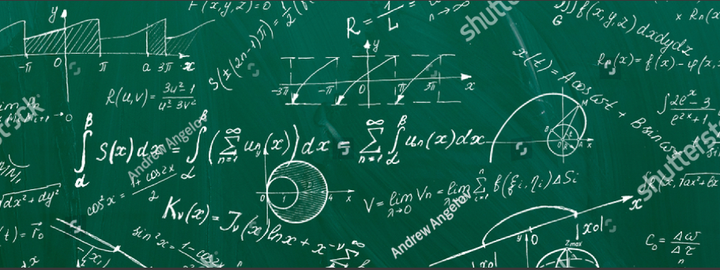This user-friendly application can help you write down mathematical equations and save them to image format, so insert them in your papers
Free Equation Editor is an efficient and practical software solution created for individuals who often find themselves in the need to write down mathematical or scientific equations, as it can help them work with a wide range of special characters and save the results to images.
- Equation Editor Shortcut for Subscript and Superscript in Ms Word Letters Blackboard Bold letters or Double letters. Use doubleXX, where XX is the required uppercase letter for e.g. Use doubleA for and doubleR for.
- Online WYSIWYG Mathematics Editor (Equation Editor), fast and powerful Editing features, inputting Normal text, Math symbols, and drawing Graph/Diagram in one single editor, help writing Math Document much easier. Export to Latex, Tikz, SVG, or Image (PNG).
Friendly appearance for both novices and the more experienced

The application experiences a brief installation process, with no particularly noteworthy events, following which users can launch it and begin working with it immediately, thanks to its fairly intuitive looks.
The main window of Free Equation Editor features a ribbon where all the categories of symbols can be found in dedicated menus, letting users work with the ones they need, while from the ‘File’ menu, the final product can be exported.
Swiftly write and edit mathematical and scientific equations
The program comprises multiple special characters in order to help users type even the most complex of equations in just a few mouse clicks. It includes ‘Math Symbols’, ‘Typeface’ signs, ‘Measure’ units, ‘Shape Symbols’, ‘Greek Capital’ letters and symbols, ‘Arrows’, ‘Brackets’, ‘Logarithm Symbols’, ‘Functions’, ‘Integrals’, ‘Matrices’ and ‘Fractions’.
Each menu comprises different characters and signs which can be inserted by clicking them; some of them can be customized by entering additional letters and numbers, as keyboard buttons remain usable, so users can also write text (explanations, notes, etc).

While the utility features a ‘Zoom in / Zoom out’ function, the font, size and color cannot be adjusted to suit certain requirements or for emphasis purposes. The typed equations cannot be copied to clipboard, they can only be saved to image format, JPG, BMP, PNG, GIF, TIFF and others.
A useful equation typing tool for you to try
Aug 26, 2020 Equation Editor Shortcut for Subscript and Superscript in Ms Word Letters Blackboard Bold letters or Double letters. Use doubleXX, where XX is the required uppercase letter for e.g. Use doubleA for and doubleR for. Equation Editor (Microsoft Equation 3.0) was included in earlier versions of Word, but was removed from all versions in the January 2018 Public Update (PU) and replaced with a new equation editor. The content here describes this feature for users who have installed this update.
All in all, Free Equation Editor proves to be a handy, albeit slightly limited application that can assist users in their equation writing tasks, enabling them to work with numerous symbols and signs, with only a couple of mouse clicks.
Filed under
Free Equation Editor was reviewed by Marina Dan This enables Disqus, Inc. to process some of your data. Disqus privacy policy
This enables Disqus, Inc. to process some of your data. Disqus privacy policyFree Equation Editor 1.0.0.0
 add to watchlistsend us an update
add to watchlistsend us an update- runs on:
- Windows 10 32/64 bit
Windows 8 32/64 bit
Windows 7 32/64 bit
Windows Vista 32/64 bit
Windows XP 32/64 bit - file size:
- 2 MB
- filename:
- equationeditor_setup.exe
- main category:
- Others
- developer:
top alternatives FREE
top alternatives PAID
Equation Editor Microsoft Word
Note: Office 2010 and 2007 offer built-in equationsupport; see Microsoft's explanations for Word2010 and Word2007.
In Office 2008 and 2004, Equation Editor is not always part of thetypical installation. To add Equation Editor, follow the appropriateinstructions below; you will need the installation CD or the files youdownloaded from IUware.
Office 2008 and 2004
Equation Editor
Note: In Office for Mac, the Equation Editor istypically installed by default. To check to see if it is installed,see the following path location, replacing versionwith the version of Office you have installed:
Formulator
If it is not installed already, to add Equation Editor:
Equation Editor Google Docs
- On the desktop, double-click the Microsoft Office 2008 orMicrosoft Office 2004 icon.
Note: If you are installing a copy downloaded fromIUware, you should have a
.dmgfile on yourdesktop. Usually, Mac OS X will automatically mount thisfile. If it doesn't, double-click the .dmg file to mount itand start the install process. - The setup window will offer one or two installation options,depending on which version of Office you are installing:
- The first option is available in both Office 2008 and 2004. InOffice 2008, it is labeled Office Installer. In Office 2004,it is labeled Office Setup Assistant. Follow theinstructions below to use one of these tools.
- The second option is available only in Office 2004, and is labeledOffice 2004. To install all Office 2004 applications andcomponents (such as the Equation Editor), drag and drop this icon intoyour Applications folder.
- Run the Office Setup Assistant or OfficeInstaller, following steps 1 through 4 in the installation.
- If you are prompted to select your installation location, eitherchoose the location of a current Office installation, or select thelocation you'd like to use for a new installation.
- In the box of customizable options, click the arrow next toOffice Tools and select Equation Editor.
- Click Install.
To use the Equation Editor in an Office application
- Open the desired Office application.
- Click Insert, and then Object.
- In the list of Object types, choose Microsoft Equation(this will open the Equation Editor).
- In the
Equation Editorwindow, form your equation;when finished, click the red X in the upper right to closethe window. - After a moment, the equation will appear in the application.